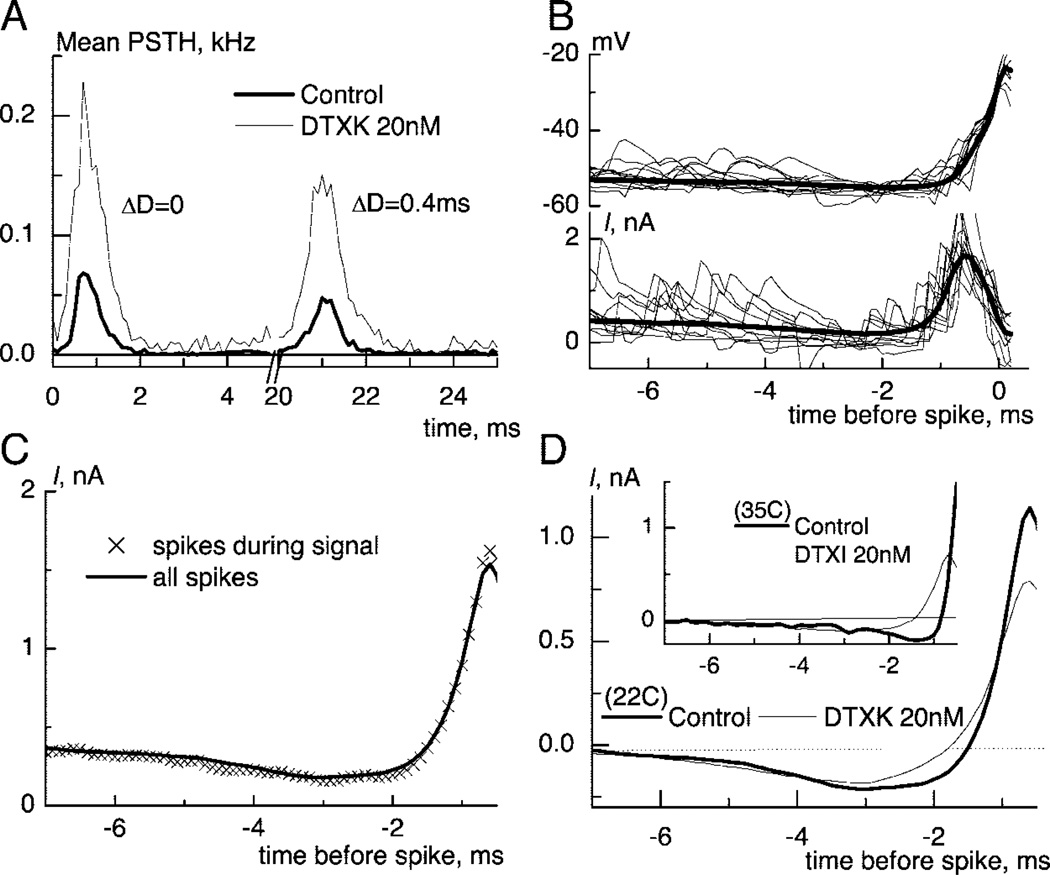FIG. 2.
IKLT reduces the integration time for noisy spike-preceding inputs. A: post stimulus time histograms in response to noise and 2 “signal” excitatory PSGs (EPSGs) delivered simultaneously and with a delay of 0.4 ms before and after DTXK (population means, n= 10). B: 10 consecutive traces of membrane potential (top) and injected current (bottom) preceding spike generation. The thick curves are the mean traces i.e. spike triggered reverse correlations. Note that even raw traces show reduced excitation just before spike-triggering depolarization. C: traces of reverse correlation for all spikes and for spikes evoked during 1 ms after injection of signal EPSGs in normal conditions (average for 10 neurons). D: change in reverse correlation currents after DTXK. The dip was relatively unchanged, but the maximum rate of rise was strongly reduced (offsets were subtracted). Inset: The change of temporal shape at 35C. Note much faster rising slope at this temperature.

